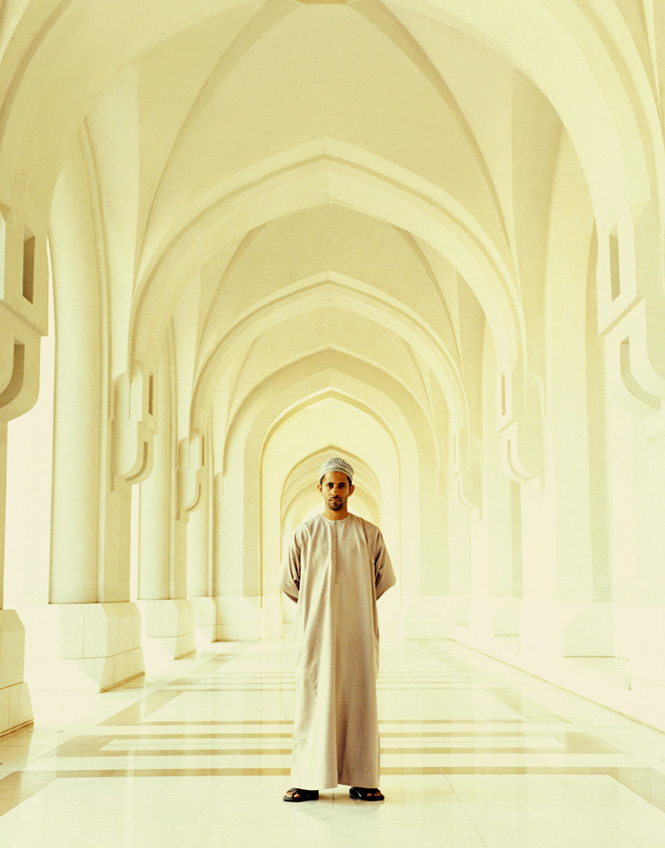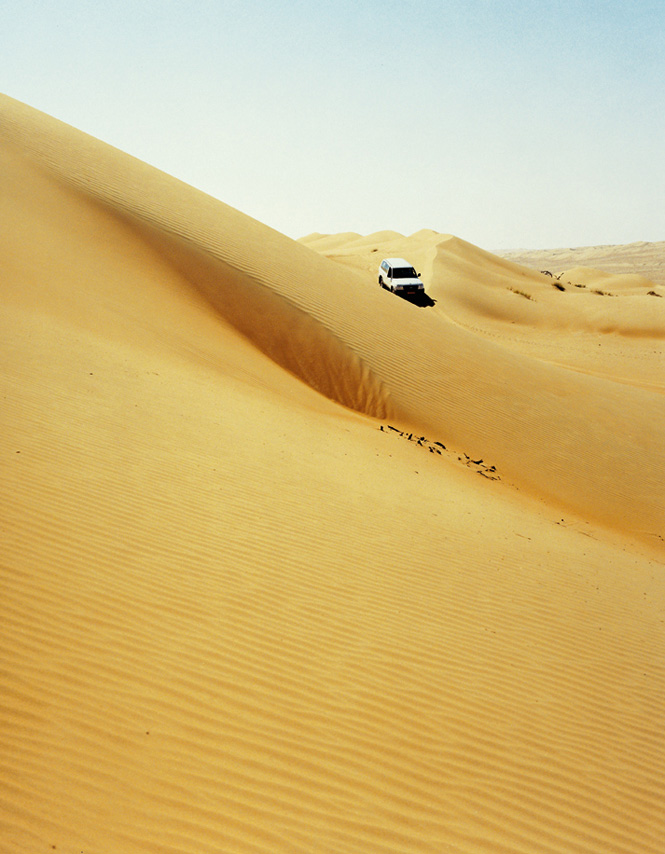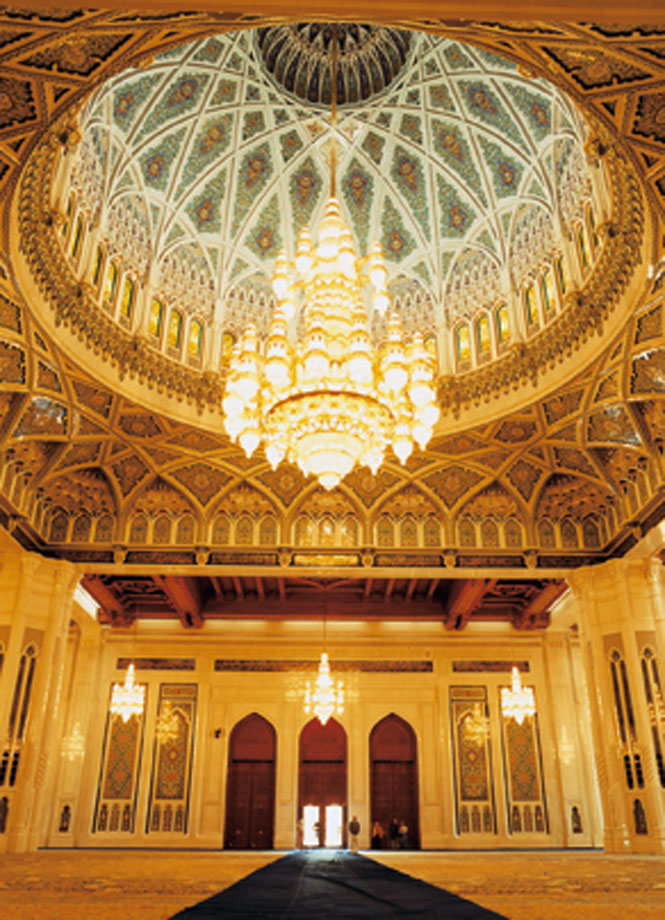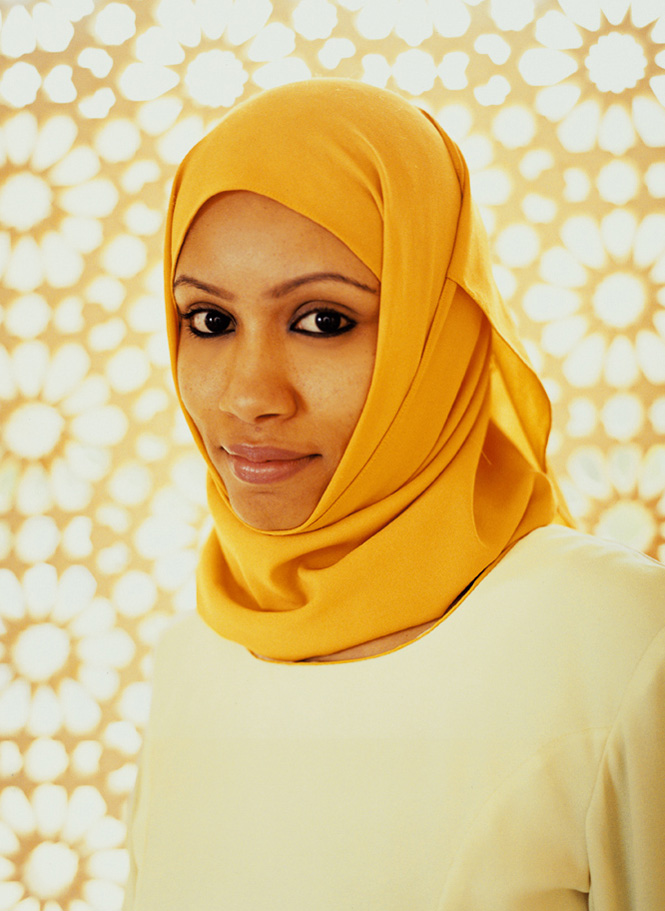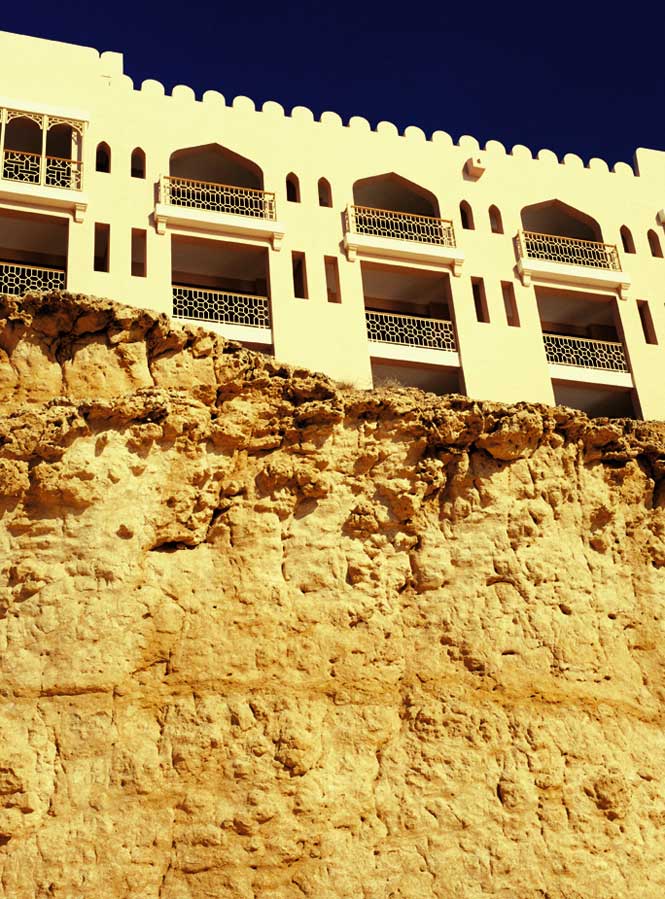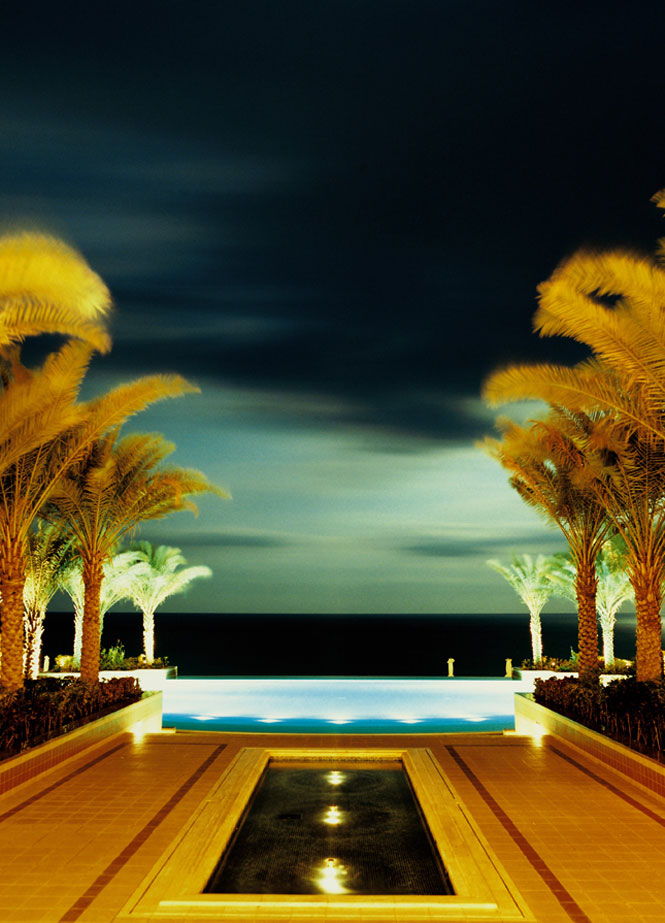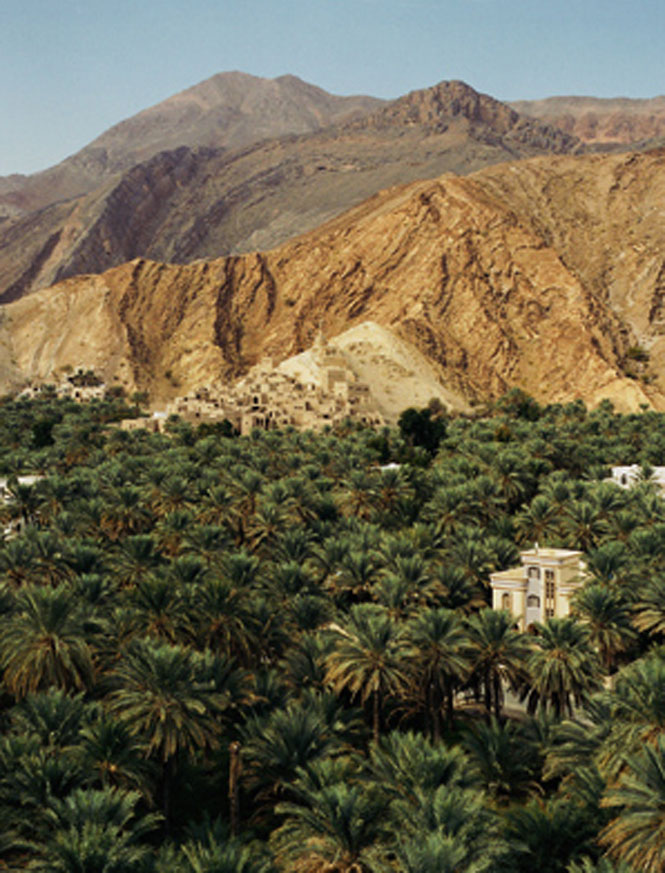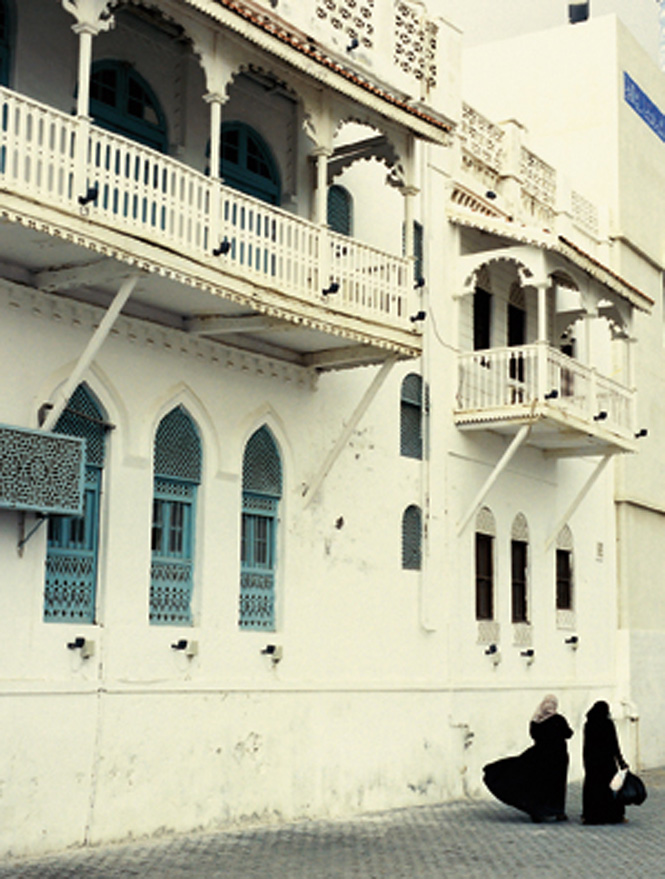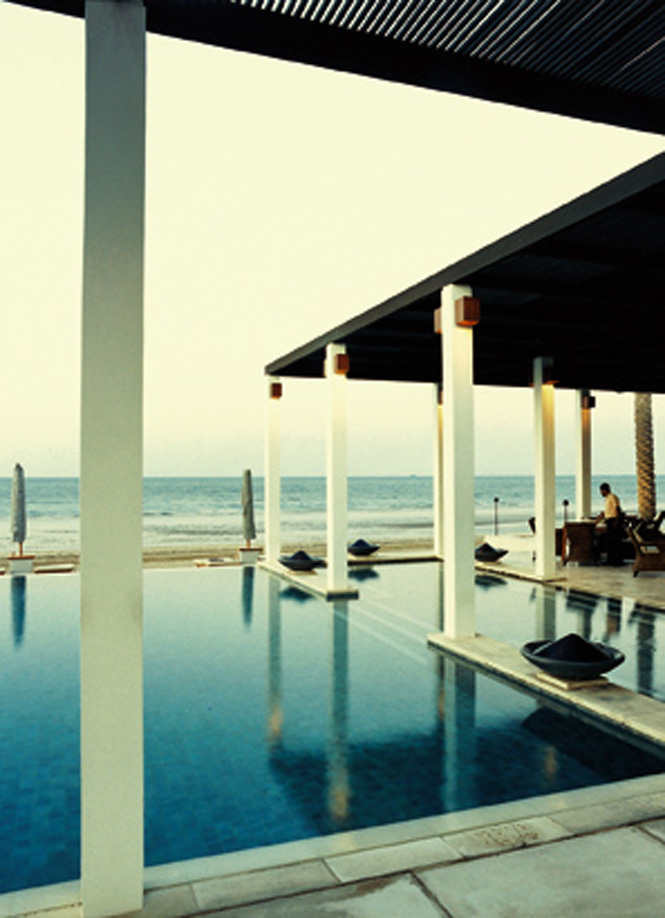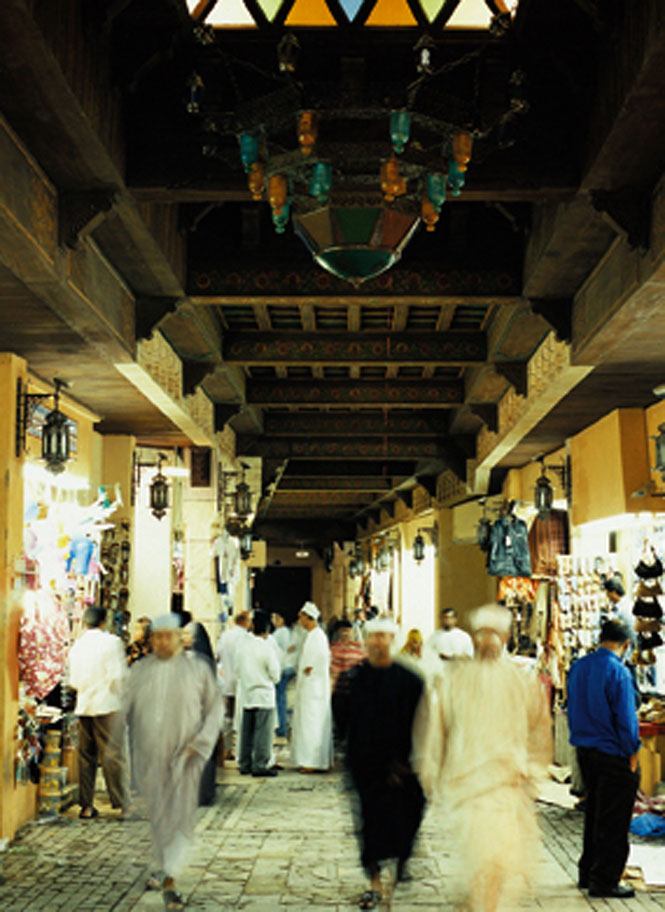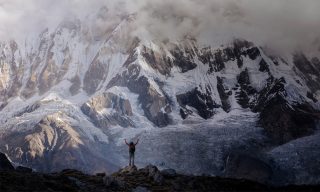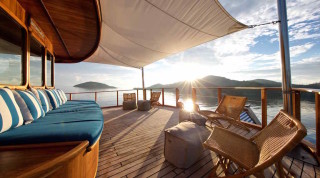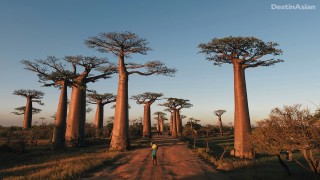New hotels, an upcoming airport expansion, a sprinkling of glass towers, and two ambitious Dubai-style residential projects rising north of the capital: is Muscat on the verge of changing beyond all recognition? That night, as I walk along the seafront in Muttrah with local historian and preservationist Ahmad al-Mukhaini, I ask him that very question.
“Changing? Yes, we are changing. The whole world is changing,” he says. “But you know here, we are used to thinking in terms of centuries, not decades, so any changes will happen slowly.”
He adds with a smile, “Well, at least more slowly than in Dubai.”
Ahmad has invited me to the harborside neighborhood of Muttrah to show me a string of recently restored merchants’ houses, some of which date back to the 1800s. With their wrought-iron balconies and shaded courtyards—part New Orleans colonial, part traditional Arabian—they are evidence of Muscat’s newfound drive to preserve its past. Much has already been lost. The expansion of the Al Alam Palace in the 1970s cleared large parts of the old walled city, while many other buildings were simply allowed to crumble. But thanks to the efforts of activists like Ahmad, a good share of the Muscat’s surviving architectural heritage has been earmarked for conservation, including the forts built by the Portuguese during their occupation of Oman’s coastline in the 16th and early 17th centuries.
A font of local knowledge, Ahmad hasn’t just brought me out to show me old buildings. As we walk along the seafront, he tells me about one of Sultan Qaboos’s less talked-about innovations.
“You see the turban I’m wearing?” he pats the snazzily wrapped pashmina scarf that rests delicately on his head. “It’s
traditional Omani, but it was really popularized by the sultan. Before him, only a few people used to wear it.”
We walk along in silence for a while. I’m struck again by the warmth with which Ahmad speaks of his ruler. Kings may be commonplace in the Gulf, but only in Oman does the devotion appear genuine. Perhaps this is why the sultan does not need to indulge in the cult of leadership practised so heavily elsewhere in the region; his portrait appears in government offices and on the country’s currency, but rarely anywhere else.
While Oman has parliamentary elections and a constitution guaranteeing personal and public freedoms, the sultan’s rule is absolute. That’s hardly revolutionary, yet the Omanis I meet maintain that the will of the sultan generally coincides with that of the people. Every winter, Sultan Qaboos embarks on a two-month tour to meet his subjects, camping in the desert and holding court around the country. The royal tour allows every Omani, regardless of age or gender, an opportunity to speak to their ruler. Oman’s younger generation might be frustrated with the glacial pace at which the country changes—unlike in Dubai, where the city alters before your eyes, innovation here is carefully considered and planned. But few appear to have any serious complaints.
In fact, the only cloud that seems to hang over the sultan is the question of who will inherit his throne. Currently unmarried, and at 60 not showing any signs of changing that status, Sultan Qaboos is without an heir. This—along with his liberal social attitudes and his devotion to the arts, music, and the pleasures of an immaculately tied turban —has given rise to rumors in the wider Arab press about the sultan’s sexual orientation. So is he or isn’t he? Most Omanis could care less and seem genuinely surprised that anyone else would find the subject worth discussing. This may be out of deference or it may reflect Ibadism’s puritanical tendencies (idle chatter is, after all, the devil’s work). I like to think it’s an indication that in some ways at least, Omani society is modern in the best sense of that word.
I’m still musing this over when Ahmad brings me back to reality.
“The Arabs like to decorate their heads,” he says, continuing his exposition of Omani headgear. “Their caps are their crowns.”
I’m not sure about “the Arabs,” but Omanis certainly take their headdress seriously. Not for them the simple white prayer cap topped with the checkered keffiyah worn elsewhere in the region. Apart from the turban, which is really only worn on formal occasions, most Omani men wear a lavishly embroidered cap called a kumah. A little like a pillbox hat, only softer, the kumah originated in East Africa and, like most of the spices used in Omani cuisine, was introduced by the Zanzibaris.
“It’s a form of communication, the way the kumah are worn,” Ahmad adds, twirling the two arsaa (traditional walking sticks) he has just bought for his sons. “Whether it is pinched into a point at the front or worn round, even the color of the stitching, it all means something.” Like marital status, for example. The rakish angle adopted by many young men is a jaunty way to indicate that they are single and looking for a wife.
I ask Ahmad if he did the same when he was younger.
He laughs.
“Me? Never. My family was very traditional. My marriage was arranged by my parents while I was still quite young. Besides, I’ve always preferred the turban.”
For the capital of a desert country, Muscat is astonishingly green. Roads are lined with grassy verges, hedges of bougainvillea, and manicured trees, all kept lush and leafy on desalinated water. But outside the city limits, the land instantly reverts to desert. Then it’s all dust and heat, a rocky, gray monotony broken only by clumps of thorn trees, acacias, and the occasional wandering camel or crumbling watchtower. These may not be the romantic sandscapes of The English Patient—for that, head south to the Wahiba Sands or farther inland to the Empty Quarter, where dunes hundreds of meters tall ripple away as far as the eye can see—but it is desert nonetheless.
Greater Muscat is testimony to what an abundance of space and money can achieve when coupled with a tortuous topography. Stretching for more than 30 kilometers along the coast, it is a string of seaside hubs nestled around bijou bays, hilltop colonies, and a new business district, each connected to the other by strip-mall development along the expressways that snake through the mountains. Like Los Angeles, Muscat is built for the car.
Architecturally, it is a pleasant if uninspiring mix of similar-looking villas, some so vast they could qualify as mini-palaces. Most are white, many have mirrored windows, and all are multicultural concoctions made with a pinch of Paris, a spoonful of Saudi, and theatrical flourishes like towers and crenellated battlements. Omanis, like the English, clearly believe their home is their castle—and not so long ago, when rival tribes would raid each other’s villages, it probably was.
The only raiders around today are likely to be corporate, but rich Muscatis are loath to give up their walls. In recent years, upwardly mobile areas have witnessed a phenomenal increase in gated communities, a reflection less of the need for security than of the rather un-Ibadi desire for one’s own personal fiefdom, the chance to play sheik every day.
Strip malls and cookie-cutter aesthetics aside, Muscat is made by its setting. The dramatic backdrop of razor-sharp ridges and crumpled mountains dotted with watchtowers and small forts—visible from every point in town—rescues Oman’s capital from the soulless sterility that characterizes the Gulf’s other instant cities. Then there’s the fact the whole place seems to be perfumed.
For centuries, Oman and neighboring Yemen constituted one of the wealthiest regions on earth. A roaring trade in frankincense, once the fragrance of choice in temples and houses from Luxor to Londinium, ensured that Arabia Felix was civilized long before the rest of the peninsula. While the camel trains that plied the ancient Incense Route to the Mediterranean are long gone, a frankincense haze still lingers in Muscat, scenting everything from taxis and restaurants to shops and private homes. Even the tassel that dangles from the necklines of the flowing robes worn by Omani men is dipped in frankincense oil, permitting the wearer to walk around in his own exquisitely perfumed world.
After a few days in this heady, sensual, and (I suspect) mildly narcotic cloud of frankincense, you come to appreciate the ancient world’s lust for Oman’s signature scent. It takes the edges off all but the most difficult days, encourages a state of perpetual daydream, and sets a smile in the heart, if not on the lips.
On my last afternoon in Muscat, hopped-up on incense and surveying the beautiful people lounging around the black-tiled pool at the Chedi, I think back to my argument with Khaled the taxi driver. No, whatever his origins, Sinbad was surely not Omani. For what Omani, in his right mind, would leave behind such a deliciously scented kingdom?
THE DETAILS
Muscat
Getting There
Emirates (emirates.com) operates daily flights from Singapore and Hong Kong to Muscat, via a two-hour stopover in Dubai.
When to go
The best time of year to visit is November through March, when temperatures range from a relatively cool 17 to 25 degrees Celsius.
Where to Stay
To experience a savvy brand of Middle East luxury, book a room at The Chedi Muscat (968/2452-4400; ghmhotels.com; doubles from US$415). For a stunning seaside location, consider one of the three hotels in Shangri-La’s Barr Al Jissah Resort & Spa complex (968/2477-6666; Shangri-la.com; doubles from US$305).
What to do
Must-sees include the Sultan Qaboos Grand Mosque with its striking 50-meter-tall dome and the Bait az-Zubair Museum on Al-Saidiyyah Street, where the antiquities collection showcases Arab jewelry and weaponry. Put your bargaining skills to the test at the oldest traditional market in the city, Muttrah Souk, which brims with handicrafts, perfume, and gold jewelry. More adventurous travelers will want to take a trip to one of Oman’s lush wadis (river gorges), of which Wadi Shab, a couple hour’s drive southeast of muscat, is among the most picturesque. Alternatively, hire a four-wheel drive for a guided tour of the Wahiba Sands.
Originally appeared in the February/March 2008 print issue of DestinAsian magazine (“Shifting Sands”)



